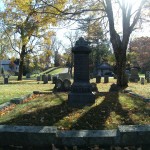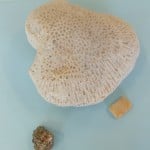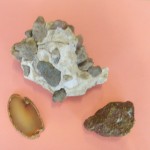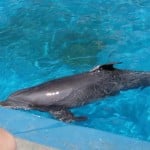Can you imagine going to a cemetery for math? Well, Chickering 4th graders do! Cemetery Math is a field trip the whole 4th grade goes on every year near Halloween. Cemetery math is a way to apply your math understanding in a real world setting.
 When we arrived at the cemetery, you were allowed to work alone or with a group. We bet you are wondering what kind of math you can do in a cemetery. So were we when we heard about it. Well, we received a packet which had math problems in it. For example, we had to try to find the perimeter of a fence around a grave stone. We also had to find at least 4 people who died or were born on a leap year. We were surprised by how tall one of the trees were when we had to estimate the height of it.
When we arrived at the cemetery, you were allowed to work alone or with a group. We bet you are wondering what kind of math you can do in a cemetery. So were we when we heard about it. Well, we received a packet which had math problems in it. For example, we had to try to find the perimeter of a fence around a grave stone. We also had to find at least 4 people who died or were born on a leap year. We were surprised by how tall one of the trees were when we had to estimate the height of it.
Having to find Nathaniel Chickering’s grave was a tricky task. Most of the Chickering graves were close together. The Chickering family were one of the first families to settle here in Dover. They owned acres of land.  Some of that land is now The Highland Cemetery*. A lot of the Chickering family are buried in the tombs with large black doors. There are at least three plaques filled with Chickering names. But, Nathaniel Chickering is buried in the 1746 original burying ground*.
Some of that land is now The Highland Cemetery*. A lot of the Chickering family are buried in the tombs with large black doors. There are at least three plaques filled with Chickering names. But, Nathaniel Chickering is buried in the 1746 original burying ground*.
The artwork on other headstones were also very impressive. One memorial had an elegant weeping willow engraved into its stone. The cemetery has an assortment of headstone shapes from the traditional rectangle to carefully carved curves. We were looking closely at the artwork in order to find an example of symmetry.
 Now can you imagine going to a Cemetery for math? It was a very unusual field trip experience, especially on Halloween. But it would be nicer on a warmer day. Even though it was kind of cold, we still had a ton of fun!
Now can you imagine going to a Cemetery for math? It was a very unusual field trip experience, especially on Halloween. But it would be nicer on a warmer day. Even though it was kind of cold, we still had a ton of fun!
Reported by Ava B., Ellie, and Lauren






